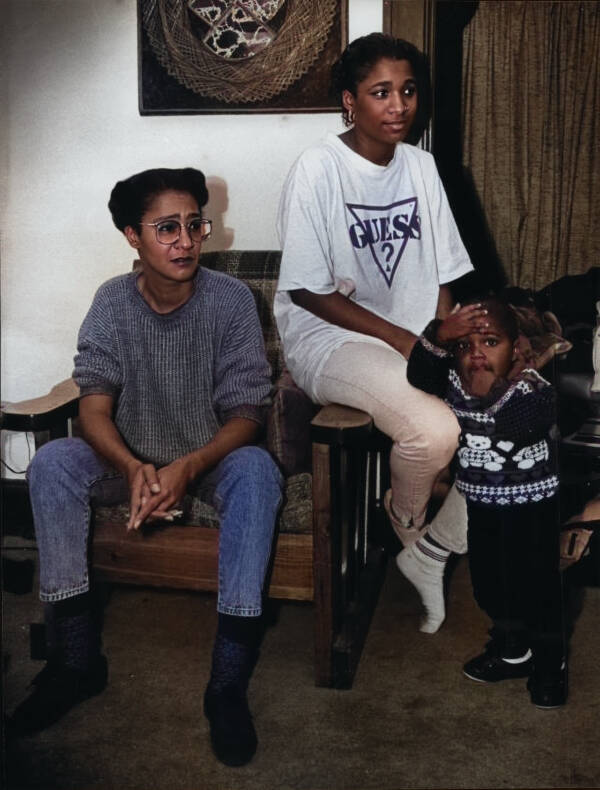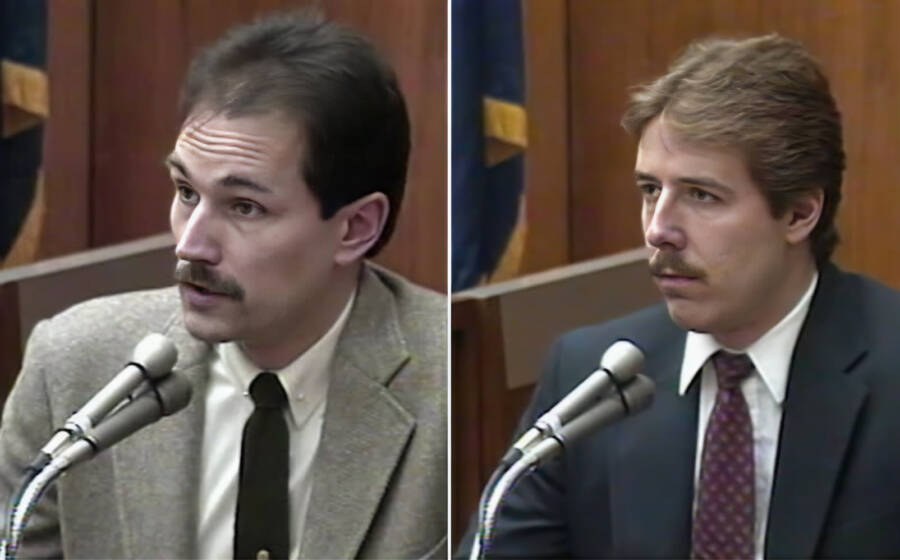Konerak Sinthasomphone was just 14 years old when he managed to escape from Dahmer's lair in 1991 — but unwitting police officers handed him right back over to Dahmer, sending him to his brutal death.

YouTubeKonerak Sinthasomphone, the youngest victim of serial killer Jeffrey Dahmer.
In 1979, a toddler named Konerak Sinthasomphone fled Laos with his family in search of a better life in America. The family settled in Milwaukee, Wisconsin — eight children living with their parents under one roof in the city’s Laotian community.
Unfortunately, the family’s hopes for a happy future were cut short by one of the world’s most infamous serial killers: the Milwaukee Cannibal, Jeffrey Dahmer.
Dahmer sexually assaulted Konerak’s older brother Somsack in 1988 and spent a short time in prison for the crime. However, tragedy struck once again in May 1991, when the serial killer murdered 14-year-old Konerak.
Perhaps the most disturbing part of Konerak Sinthasomphone’s story is that he almost managed to escape. He was found wandering the streets of Milwaukee, naked and in a daze — but police sent him right back into Dahmer’s apartment, securing his grisly fate. This is the heartbreaking tale of Jeffrey Dahmer’s youngest victim.
The Sinthasomphone Family Immigrates To America
Konerak Sinthasomphone’s father, Sounthone, was a rice farmer in Laos when Communist forces overthrew the country’s monarchy in the 1970s, according to The New York Times. When the government tried to seize his land, he decided to leave for the safety of his family.
Late one night in March 1979, Sounthone put his family on a canoe and sent them across the Mekong River to Thailand. Konerak was around two years old at the time, and his parents drugged him and his siblings with sleeping pills so their cries wouldn’t attract the attention of soldiers. Sounthone swam across the river himself several days later.
In Thailand, the Sinthasomphone family lived in a refugee camp for a year. An American-based Catholic program then helped them relocate to Milwaukee, where they settled in 1980.
Life in the United States wasn’t always easy for the Sinthasomphones, but over the next several years, most of the family learned English and assimilated into American culture. Everything was going well — until Somsack Sinthasomphone met Jeffrey Dahmer in 1988.
Jeffrey Dahmer Lures In The Sinthasomphone Brothers
Konerak Sinthasomphone’s brother Somsack was just 13 years old when he met Jeffrey Dahmer, who had already killed at least four boys and young men by 1988. Though Somsack escaped with his life, Dahmer sexually assaulted the teenager after convincing him to participate in a nude photo shoot in exchange for money.
As reported by People, Dahmer was initially sentenced to eight years in prison for the assault, but he was released after less than a year behind bars when he wrote the judge on the case a letter expressing his regret.

Curt Borgwardt/Sygma/Getty ImagesJeffrey Dahmer was arrested several times over the years for various offenses before he was finally charged with murder in 1991.
Dahmer was still on probation for his crimes against Somsack three years later when he lured 14-year-old Konerak in the very same way.
On May 26, 1991, Dahmer met Konerak in a Milwaukee mall. The Sinthasomphone family was struggling for money, so when Dahmer offered the boy payment for a photo shoot, Konerak reluctantly agreed. He accompanied Dahmer to his apartment — where his attempt to earn an income for his family quickly turned into a nightmare.
Konerak Sinthasomphone Almost Escapes Dahmer’s Clutches
Early in the hours of May 27, 1991, Dahmer’s neighbor Glenda Cleveland placed a call to the Milwaukee police. According to court documents, she told the dispatcher, “I’m on 25th and State, and there is this young man. He’s buck naked. He has been beaten up… He is really hurt… he needs some help.”
Konerak Sinthasomphone was naked and bleeding in the street outside Dahmer’s apartment. Unbeknownst to Cleveland — and to the police who responded to her call — Dahmer had already begun torturing the boy. The killer later confessed that he’d drilled a hole into Konerak’s skull at that point, “just enough to open a passageway to the brain,” and injected hydrochloric acid that induced a “zombie-like state.”

TwitterGlenda Cleveland with her daughter, Sandra Smith. Cleveland called the police multiple times to tell them about Dahmer, but her warnings went unheeded.
However, the officers that arrived at the scene thought that Konerak was just drunk. The teen had escaped when Dahmer stepped out of his apartment to go buy liquor, but the deranged serial killer returned home while the police were attempting to question Konerak.
Dahmer told the officers that Konerak was his adult homosexual lover who had simply had too much to drink. They believed him and escorted Konerak back into Dahmer’s apartment — and to his ultimate death.
“Despite the vigorous protestations of several African-Americans on the scene,” the court documents read, “the officers and Dahmer led Sinthasomphone back to Dahmer’s apartment, where the body of one of Dahmer’s victims lay unnoticed in an adjoining room.”
Thirty minutes later, Konerak Sinthasomphone was dead, the 13th victim of the Milwaukee Monster.
The Aftermath Of Konerak Sinthasomphone’s Murder
Jeffrey Dahmer was finally arrested on July 22, 1991, when another potential victim — Tracy Edwards — managed to escape from his lair and flag down the police. In the killer’s apartment, authorities found the remains of 11 separate victims, including Konerak.
In the wake of Dahmer’s capture, many were left wondering how his crimes had gone on for so long despite plentiful evidence against him and numerous reports that he was up to no good.

TwitterJohn Balcerzak and Joseph Grabish, the police officers who returned Konerak to Jeffrey Dahmer the night he was murdered.
When the nature of the killer’s crimes ultimately came to light, Milwaukee Police Chief Philip Arreola fired John Balcerzak and Joseph Gabrish, the two officers who had responded to Glenda Cleveland’s call about Konerak on May 27, for not doing their jobs properly. Arreola said the officers failed to positively identify Konerak, thoroughly listen to witnesses, or call their superior officers for advice. A court order later reinstated the men.
Recordings also show that one of the officers joked about needing to be “deloused” after leaving Dahmer’s apartment and that they refused to listen to Cleveland, who called six times insisting that Konerak was in danger after they left.
“I wish there had been some other piece of evidence or information available to us,” Gabrish later said. “We handled the call the way we felt it should have been handled.”
Gabrish also said they didn’t bother to look into Dahmer’s background because of how “cooperative” he was during the incident. If they had, they would have found that he was on probation for child molestation.

EUGENE GARCIA/AFP via Getty ImagesJeffrey Dahmer was ultimately condemned to 957 years in prison, but he was killed by a fellow inmate just two years into his sentence.
The Sinthasomphone family filed a lawsuit against the City of Milwaukee and the police department, claiming that their failure to protect Konerak was based in racism. In 1995, the city settled the suit for $850,000.
The Sinthasomphone family struggled greatly with their son’s death. Many of them described feeling numb. Sounthone even questioned why he had ever come to America in the first place: “I escaped the communists and now this happens. Why?”
After learning the story of Jeffrey Dahmer’s youngest victim, read about the killer’s mother, Joyce Dahmer, and his father, Lionel Dahmer. Then, read about David Dahmer, the reclusive brother who changed his name.





